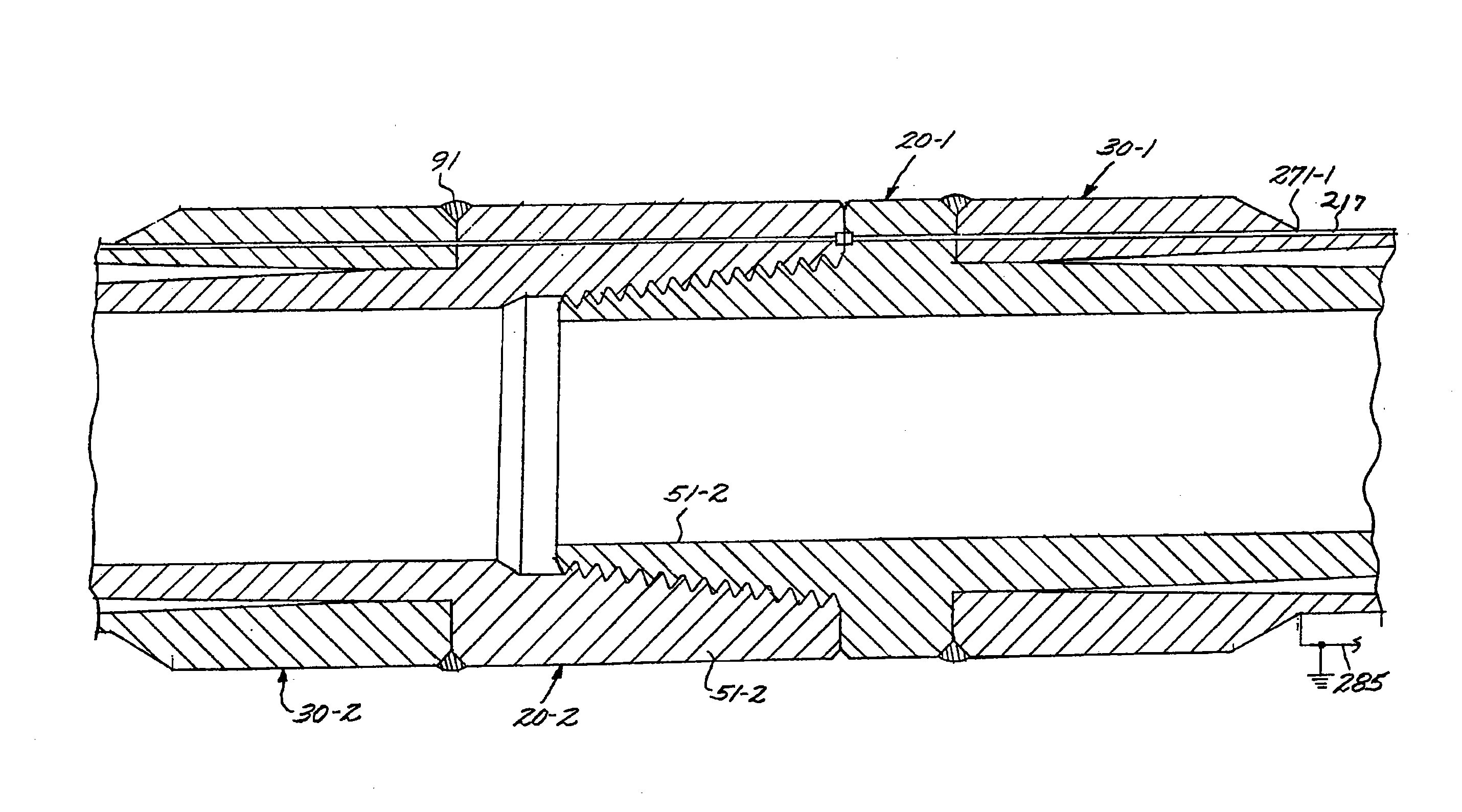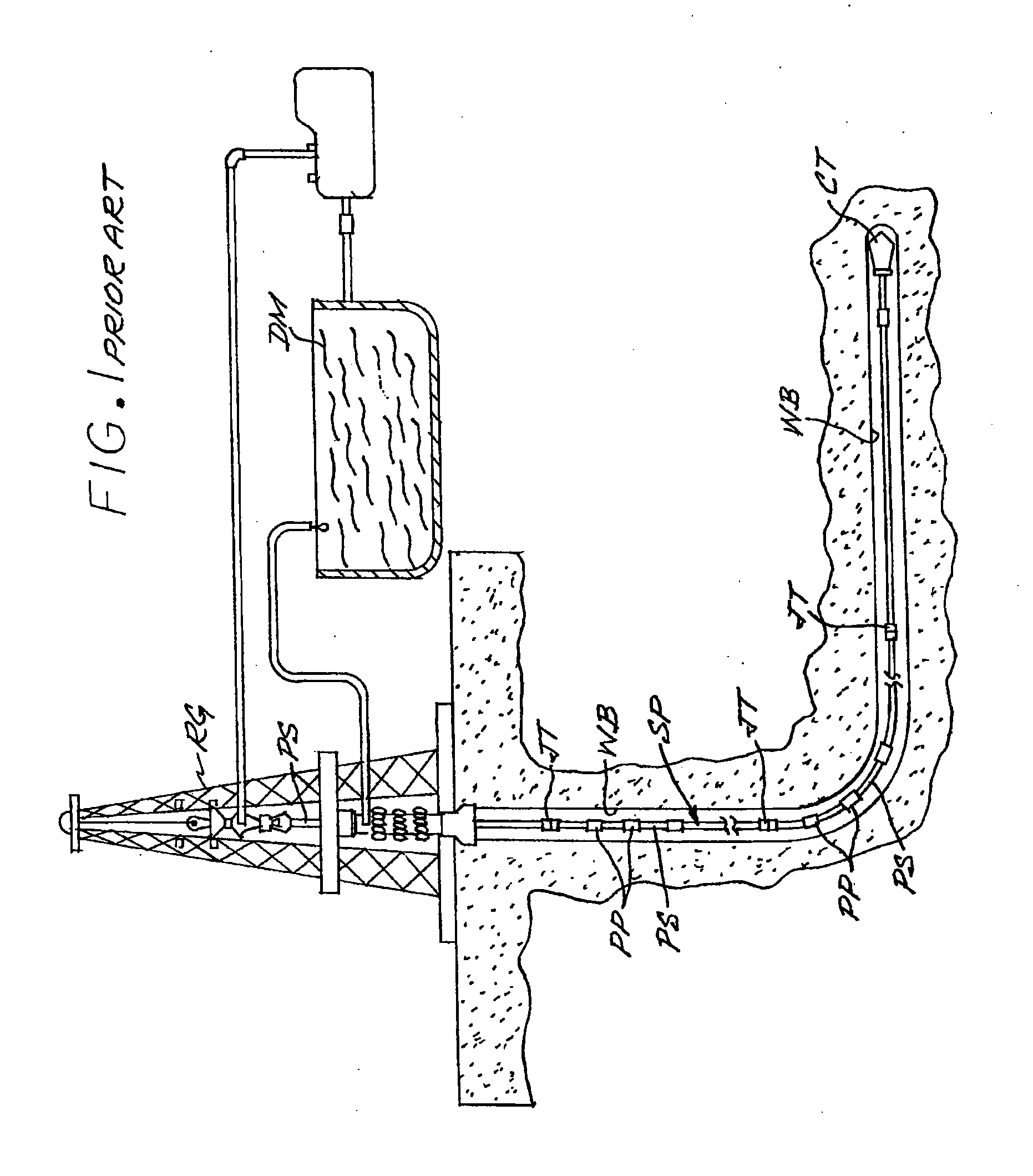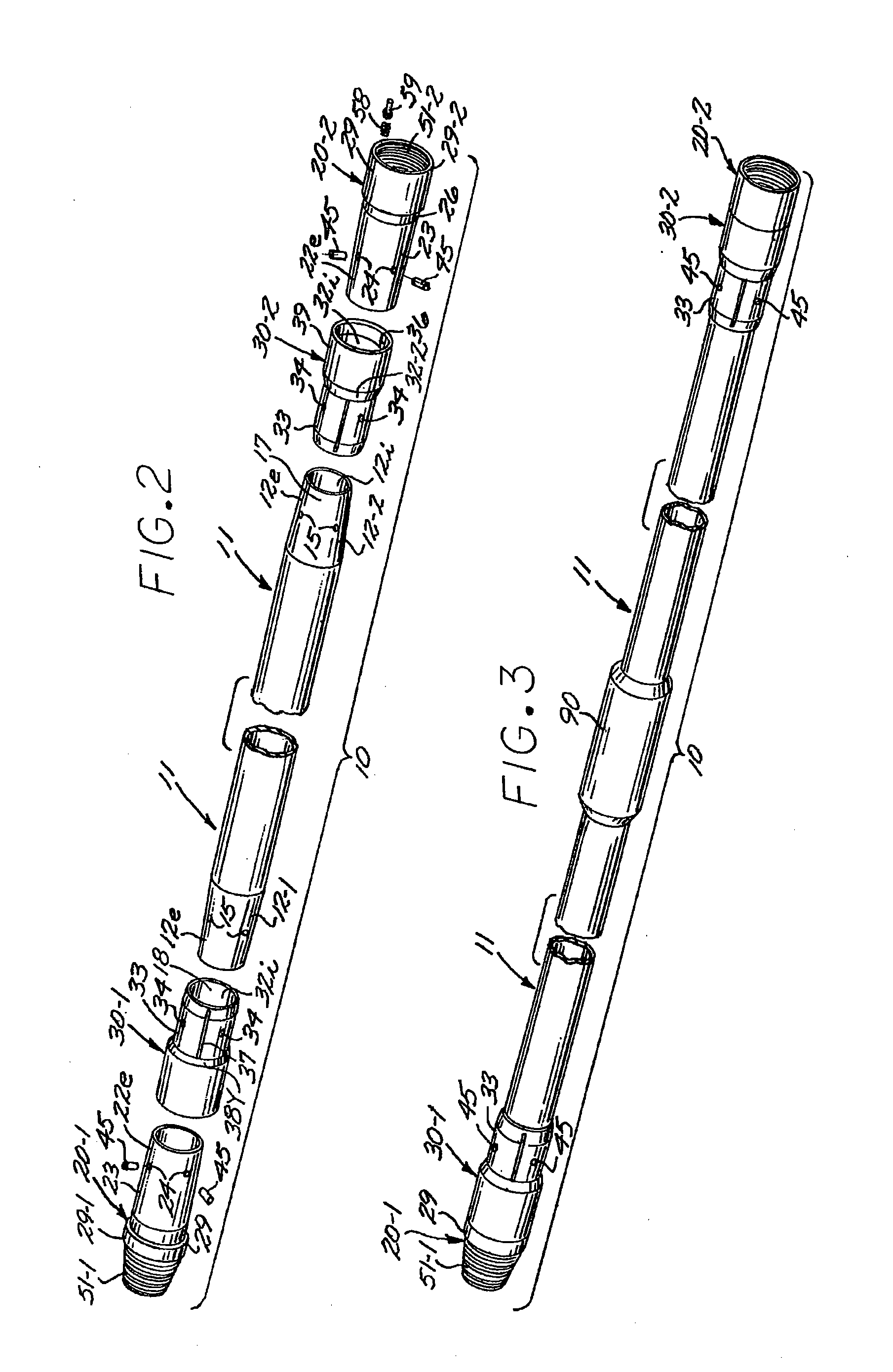Composite drill pipe and method for forming same
a technology of composite drill pipe and metal composite, which is applied in the direction of hose connection, screw threaded joint, borehole/well accessories, etc., can solve the problems of long time-consuming and laborious, inefficient ability to adjust the drilling rate, reach and direction in the pursuit of oil traps, and difficulty in adjusting or performing short radius turns, etc., to achieve enhanced stress load diffusion, enhanced load diffusion across the metal-composite interface, and enhanced stress load diffusion
- Summary
- Abstract
- Description
- Claims
- Application Information
AI Technical Summary
Benefits of technology
Problems solved by technology
Method used
Image
Examples
Embodiment Construction
[0045]As shown in FIG. 1 current drilling practices depend on a string SP composed of drill pipe segments PS connected end-to-end to turn a cutting tool CT mounted on the lower string end. In the course of such turning, the tool CT grinds and penetrates through the bottom of the well bore WB with the particulates continuously brought out to the surface by a circulating flow of drilling mud DM pumped into the bore to equalize bore pressures. As readily available formations are depleted these drilling projects now extend to much greater depth, and / or greater lateral reach, with the weight of the pipe string SP and / or its friction load in the well bore setting the practical exploration limits. The complexity of a drilling rig RG conformed for such long reach drilling is enormous and the logistics of its movement alone, encourage directional capability along with an increasing pipe string. This same complexity of the rig also determines the manipulation convenience of each of the pipe s...
PUM
| Property | Measurement | Unit |
|---|---|---|
| length | aaaaa | aaaaa |
| outer diameter | aaaaa | aaaaa |
| outer diameter | aaaaa | aaaaa |
Abstract
Description
Claims
Application Information
 Login to View More
Login to View More - R&D
- Intellectual Property
- Life Sciences
- Materials
- Tech Scout
- Unparalleled Data Quality
- Higher Quality Content
- 60% Fewer Hallucinations
Browse by: Latest US Patents, China's latest patents, Technical Efficacy Thesaurus, Application Domain, Technology Topic, Popular Technical Reports.
© 2025 PatSnap. All rights reserved.Legal|Privacy policy|Modern Slavery Act Transparency Statement|Sitemap|About US| Contact US: help@patsnap.com



